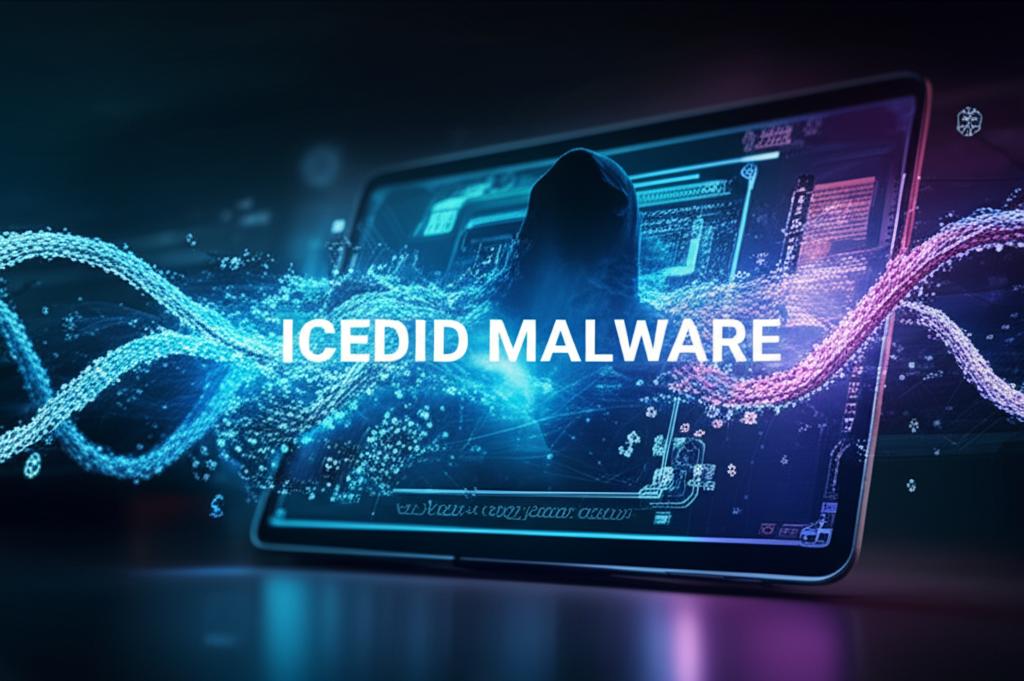IcedID Malware: Unmasking the Pernicious Digital Threat
Understanding IcedID: A Formidable Banking Trojan
IcedID, also known as BokBot, stands as a sophisticated and persistent banking Trojan that has evolved into a multi-purpose malware loader. Initially designed to steal financial credentials and facilitate banking fraud, its capabilities have significantly expanded, making it a critical initial access broker (IAB) for a host of other debilitating cyberattacks, including ransomware deployments.
Originating in 2017, IcedID quickly gained notoriety for its advanced web injection techniques, allowing attackers to manipulate legitimate banking websites in real-time to trick users into divulging sensitive information. Its modular nature and continuous development ensure its adaptability against evolving security measures, making it a pervasive and dangerous threat to individuals and enterprises alike.
How IcedID Infiltrates and Operates
The infection chain of IcedID is typically initiated through highly effective social engineering tactics, primarily via:
- Phishing Emails: Malicious emails containing weaponized attachments (e.g., Office documents with macros, ZIP archives) or links to compromised websites.
- Malvertising: Redirecting users from legitimate websites to malicious ones hosting IcedID.
- Exploit Kits: Although less common now, historically used to exploit vulnerabilities for silent infection.
Once executed on a victim’s machine, IcedID establishes persistence and communicates with its Command and Control (C2) servers to download additional modules. Its operational methodology includes:
- Web Injects: Manipulating browser content to display fake login pages or transaction requests on legitimate banking sites.
- Proxy & SOCKS: Creating a proxy tunnel for attackers to route traffic through the compromised machine, masking their origin.
- VNC (Virtual Network Computing): Enabling remote desktop access for attackers to directly control the compromised system.
- Credential Theft: Harvesting login credentials, credit card numbers, and other Personally Identifiable Information (PII).
- Loader Functionality: Crucially, IcedID often acts as a precursor for other malware strains, notably ransomware families like Egregor, Conti, and Maze, providing initial access to corporate networks.
The Devastating Impact and Who’s Behind It
The consequences of an IcedID infection can be severe, ranging from direct financial losses to profound operational disruption:
- Financial Fraud: Unauthorized transactions, account takeover, and direct theft of funds.
- Data Breaches: Exposure of sensitive personal and corporate data, leading to regulatory fines and reputational damage.
- Ransomware Deployment: Serving as the gateway for more destructive attacks that encrypt entire networks, demanding exorbitant ransoms.
- Business Disruption: Downtime, recovery costs, and erosion of customer trust.
IcedID is primarily deployed by sophisticated cybercrime groups, often referred to as advanced persistent threats (APTs) or financially motivated actors. These groups operate with a high degree of organization, leveraging continuously updated infrastructure and evasion techniques to maximize their illicit gains.
Fortifying Defenses Against IcedID Malware
Combating a dynamic threat like IcedID requires a multi-layered and proactive security strategy. Organizations and individuals must prioritize:
Proactive Prevention Measures:
- Advanced Endpoint Detection and Response (EDR): Utilize EDR solutions that can detect and prevent sophisticated malware behaviors, not just known signatures.
- Network Segmentation: Isolate critical systems and data to limit the lateral movement of malware within a network.
- Email Security Gateways: Implement robust email filters to block malicious attachments and phishing attempts.
- Regular Patching and Updates: Keep operating systems, applications, and security software up to date to address known vulnerabilities.
- Least Privilege Principle: Restrict user permissions to the minimum necessary for their roles, reducing the potential impact of a compromised account.
User Awareness and Incident Response:
- Employee Training: Educate users about identifying phishing attempts, suspicious links, and the dangers of enabling macros in unknown documents.
- Multi-Factor Authentication (MFA): Implement MFA for all critical accounts to add an extra layer of security against credential theft.
- Regular Backups: Maintain offsite, isolated backups of critical data to ensure recovery in case of ransomware or data loss.
- Incident Response Plan: Develop and regularly test a comprehensive incident response plan to quickly detect, contain, and eradicate IcedID infections.
“The persistent evolution of IcedID underscores the critical need for continuous vigilance and adaptive cybersecurity strategies. It’s not just a banking Trojan; it’s a critical enabler for the most damaging cyberattacks today.”
By understanding IcedID’s mechanisms and implementing robust security practices, organizations can significantly reduce their risk exposure to this pernicious digital threat and its associated dangers.







